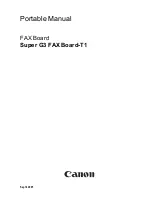
Page Design
One rule to know when designing documents is keep it simple.
Avoid cluttering your documents with unnecessary font changes.
It takes experience and talent to skillfully blend a wide range of
typefaces.
Always consider your reader first. Select a typeface that’s best for
your particular document and consider the meaning of your words.
What are you trying to communicate? A strong, no-nonsense
typeface, like Helvetica, proclaims its message loud and clear. This
is why sans serif type is often used for signs, like
NO PARKING
.
Helvetica is considered so strong it does not even have a true Italic
form, since Italic forms convey grace.
Skillful typeface use in page design also increases readability as
well as legibility. Newspapers are a good example of readability.
Typeface chosen for text and headlines varies in size, and text is
contained in columns two to three inches wide. Thus the eye does
not have to travel far and the reader does not lose his place.
Other aspects of design such as word spacing (justified vs.
unjustified), line spacing, letter spacing within words, upper case
and lower case letters, all affect legibility.
Many books are available on page layout and design as well as
typography. Many words have meanings that apply only to
typography. (See figure 5.9 for some of them.) However, page
design has no set rules. If you design a document and don’t have
time to study the craft, remember the rule: keep it simple.
Chapter 5
5 - 1 2
P r o f e s s i o n a l P r i n t i n g
Summary of Contents for PS 410
Page 1: ...QMS PS 410 User s Guide 1800148 001E...
Page 8: ...v i...
Page 14: ......
Page 16: ......
Page 24: ......
Page 26: ......
Page 46: ......
Page 62: ......
Page 82: ......
Page 84: ......
Page 102: ......
Page 114: ......
Page 116: ......
Page 138: ......
Page 140: ......
Page 154: ......
Page 156: ......
Page 170: ......
Page 204: ......
Page 206: ......
Page 222: ......
Page 224: ......
Page 232: ......
Page 240: ......
Page 241: ...Appendix C Optional Accessories Available QMS Accessories C 1...
Page 242: ......
Page 245: ...Appendix D Character Encoding Tables Character Encoding Tables D 1...
Page 246: ......
Page 249: ...Appendix D Symbol Encoding Character Encoding Tables D 3...
Page 252: ......
Page 256: ......
Page 258: ......
Page 280: ......
















































